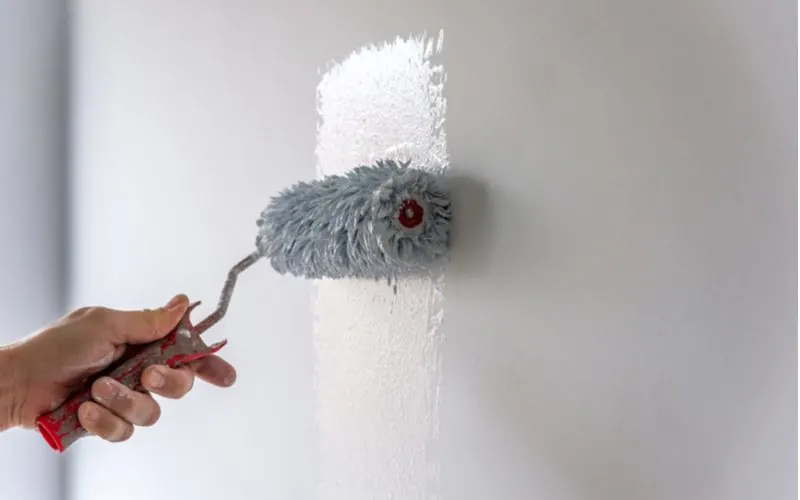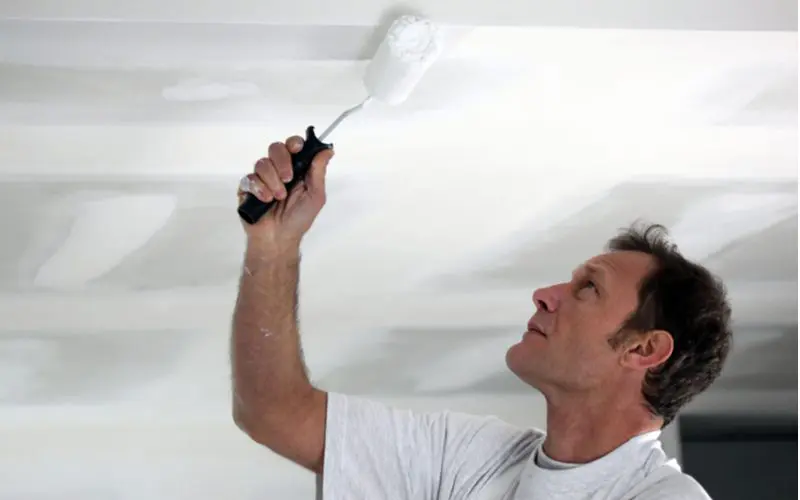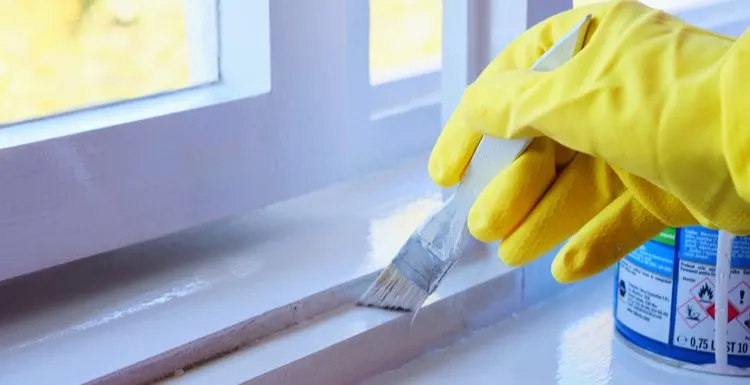With so many other finish options out there, it can be tough to choose between them.
Enter satin paint. But what is satin paint, and how do you know if it’s the right finish for your project? Read on to learn more.
What Is Satin Paint?
“Satin” is a type of paint finish. When paints dry, they reflect a certain amount of light. That amount of light determines the paint finish.
On one end of the spectrum are matte paints, which absorb most of the light that hits them. On the other end are high-gloss paints, which are very shiny and reflective.
The finish also determines the durability and coverage of the paint. The higher the gloss, the higher the durability. The lower the gloss, the better it is at masking imperfections.
Satin paint is an excellent middle ground because of its versatility. Often described as “pearly,” this finish has a distinctive, velvety sheen that can appear glossier or flatter, depending on the room’s light source.
It offers durability and shine, so it’s a great choice for high-traffic areas like kid’s bedrooms or hallways. One thing to keep in mind is that it won’t mask nail holes, brush strokes, and bumps, as well as a lower gloss finish, like matte or eggshell.
You can combat that flaw with a bit of extra prep work and patience. If you want a perfect satin sheen, take the time to spackle, sand, and scrub your surfaces.
Think satin paint is the right choice for you? Keep reading to learn why this finish is so popular with DIYers and professionals alike.
The Long Answer: A Homeowner’s Guide to Satin Paint

Grigor Ivanov/Shutterstock
If you’ve been searching for a way to freshen up your home, you can’t go wrong with a few coats of satin paint.
Its soft, warm glow and mid-level durability give homeowners the best of both worlds, providing the perfect canvas for you to revamp your interior design without fear of everyday messes ruining your hard work.
Before settling on satin, keep in mind that other finishes have their own flaws and benefits. No paint sheen is perfect for every project.
How Is Satin Paint Made?
Paint manufacturers follow a basic template to create paint, no matter what the finish:
- Pigment: Particles of color
- Binders: Oil or latex used to hold the other ingredients together
- Solvents: The bulk material in a can of paint makes it easy to apply. In latex paint, it’s water. In oil-based paint, it’s paint thinner.
- Additives: Provide other features to paint, like mildew-resistance or increased thickness
The more pigment in a paint, the more matte it is, while the more binder in a paint, the shinier it is.
Pigment particles absorb light while binders send it bouncing back into the room. Satin paint contains a higher ratio of pigment than glossier options but less than eggshell or matte finishes.
Satin Paint: Pros and Cons

VGstockstudio/Shutterstock
Before you pick up your paintbrush, you should weigh the costs versus the benefits of a satin paint finish.
Pros (what we like)
- It resists moisture better than matte or eggshell paints
- It can be used indoors or outdoors
- Provides a subtle glow that adds depth to a room
- It is more durable than a matte or eggshell finish
- It has a richer color than gloss paints due to increased pigment particles
- Easy to clean
- Hides flaws better than semi-gloss or high-gloss
Cons (what we don’t like)
- Can lose some of its sheen from excessive scrubbing
- It hides fewer imperfections than matte finishes, so it requires more prep work to create a smooth surface
- It tends to be more expensive than matte or eggshell paint
- Oil-based satin paints can yellow over time
- Not ideal for older homes, where the walls contain more divots and bumps
- It dries quickly, so painters should apply in one sitting to avoid uneven color
When Should I Use Satin Paint?
Pro painters know that the right paint finish can make or break a project. You can bring out the best qualities of your home by thoughtfully choosing a sheen that balances aesthetics with practicality.
Satin paint comes to life in these applications:
- Kitchens, bathrooms, laundry rooms, or anywhere else that moisture- and mildew-resistance comes in handy
- Smaller bedrooms, hallways, or living rooms, where the velvety sheen will add depth to your walls
- Outdoor trim, handrails, and mudrooms
- Brand new homes with smooth, flawless walls
- Areas that require frequent cleanup, like playrooms and kids’ bedrooms
Frequently Asked Questions

Phovoir/Shutterstock
What is satin paint used for?
Satin paint is a middle ground for painters who want durable, moisture-resistant paint without the extreme shine of a gloss finish.
It’s an excellent choice for high-traffic areas like kitchens and bathrooms. It’s also great for outdoor trim because of its resistance to fading and mildew.
What is the difference between gloss and satin paint?
Satin paint contains more pigment and less binder than gloss paint. The high pigment gives satin paint a more subtle sheen, while gloss is highly reflective.
Is satin paint shiny?
While it’s more reflective than matte or eggshell paint, satin paint has a more pearl-like luster than a shine. Semi-gloss and gloss paints are much shinier options.
Are satin and semi-gloss the same?
Semi-gloss paints have more of a sheen than satin paints. They are also more durable but tend to show more imperfections because light scatters off of them and draws attention to tiny details.
Should You Choose Satin Paint?
When you consider everything that satin paint brings to the table (or cabinets or walls…), it’s easy to see why it’s the most popular choice of finish.
Just remember to prep your surfaces thoroughly, get all of your painting done in one go, and avoid repainting over dry areas.
With these precautions in mind, you’ll achieve the luxurious glow that only satin paint provides.

